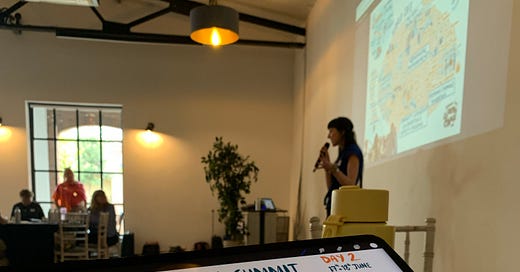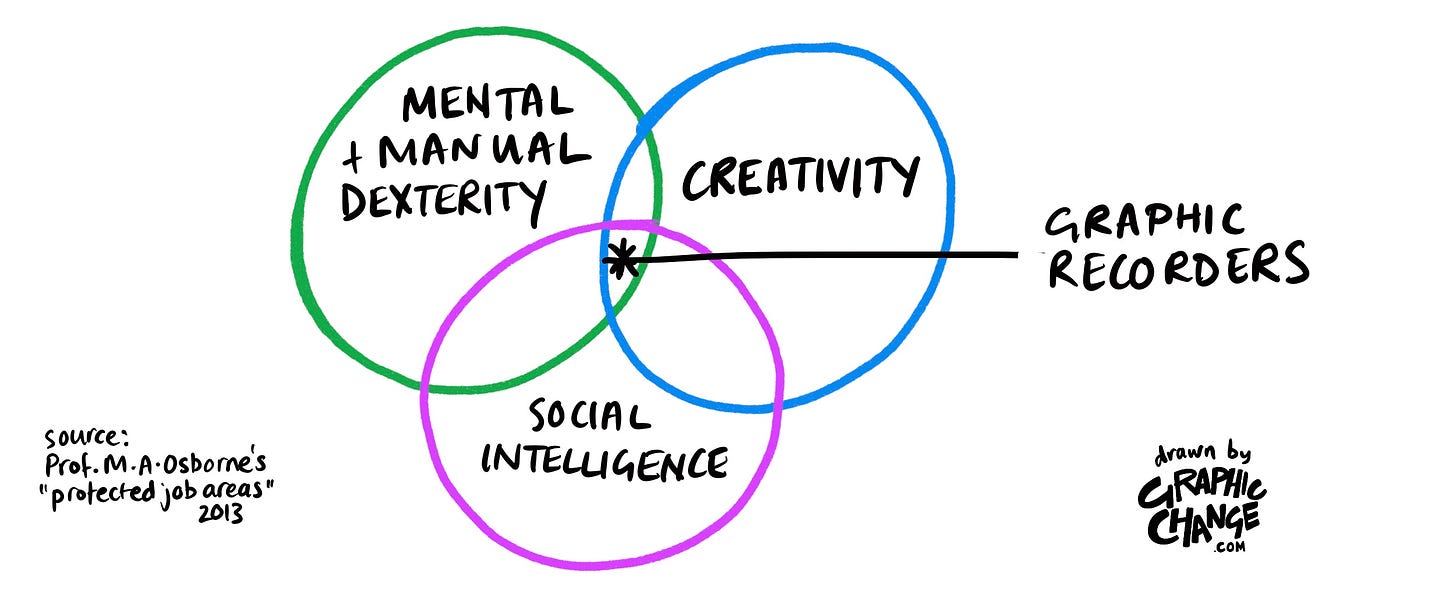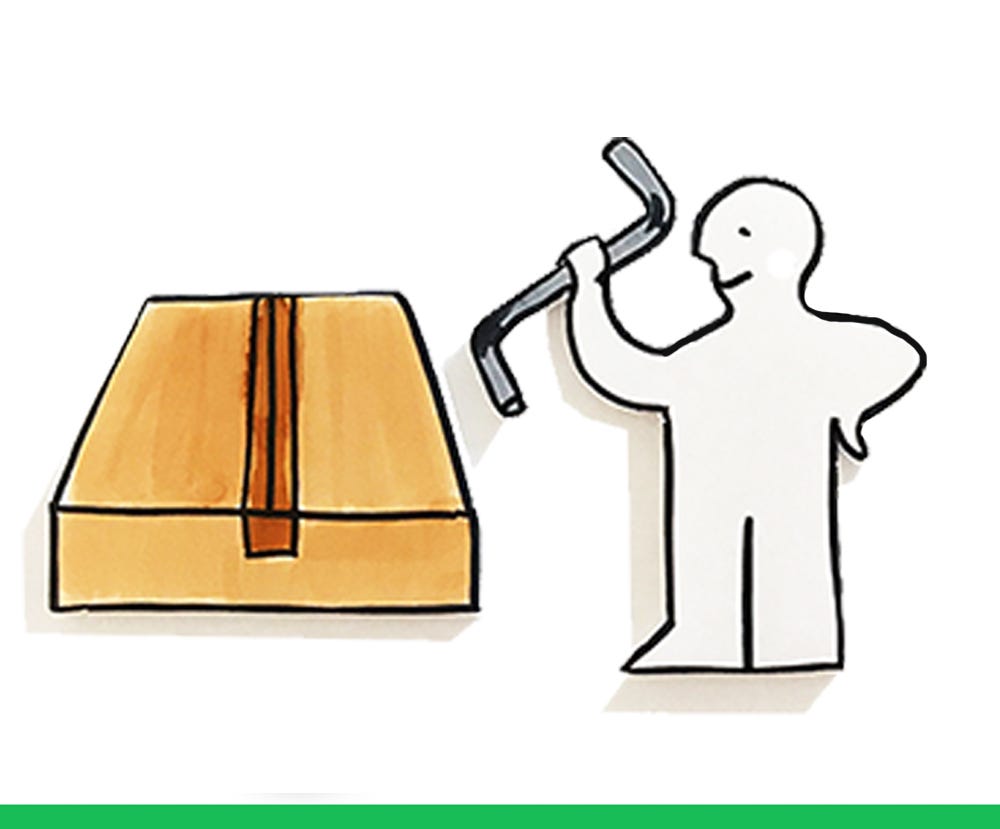The i Paper in the UK recently ran an article The jobs that will be in demand in 2040, according to futurologists. Why this didn't say 2026 is confusing to anyone who's been awake this year.
The obvious examples of jobs Ai won't easily take over, (so retrain or encourage your children into them) were given by futurologist Martin Ford as:
"electrician, plumber, nurse, hairdresser, skilled construction worker, physical therapist, farmer. To automate a job like that would require a science fiction robot, like C-3PO in the Star Wars movies."
Professor Michael A. Osborne, Professor of Machine Learning at Oxford University, identified as far back as 2013 similar "protected job areas" in the fields of creativity, social intelligence and manual dexterity.
The views of those expert futurologists gave us reasons to be cheerful here at Graphic Change. Since 2006 Cara Holland has been a professional pen for hire. She attends (in-person and virtually) events drawing the key themes and discussions whilst capturing the mood of the event as a graphic recorder. At the end of the event (she draws in real time) she hands over a rich picture for event organisers to share.
Ever since the rise in the use of shonky but functional doodling software we've been discussing the future of software, now Ai, in relation to our business.
TL;DR: We think we’re safe for now. Here's our 4 reasons to be glad we're graphic recorders - and why you might want to consider retraining, too:
1. Manual and mental dexterity
Futurologist Martin Ford mentions Ai-proof jobs are "jobs that require mobility, dexterity and problem-solving skills in a very unpredictable environment". That encapsulates the skills of a graphic recorder.
Drawing is a very physical thing - pen to big paper/Pencil to iPad - taking a blank space and turning it into a series of culturally relevant icons and key text that the audience can relate to as discussions evolve and themes emerge. More than that the graphic recorder is synthesising the content and making connections in real time. They can spot the constellations.
In addition the graphic recorder problem solves as they go. A speaker doesn't turn up for the 4th slot of the day? - A graphic recorder will work out what to fill that 4th space with that you've been saving for them. The event organisers don't really know what they want you to do? - A graphic recorder will negotiate with organisers and steer them to make the best use of their skills on the day.
During graphic recording the human brain naturally (with practise and training) works out where to put each element, how to sort each theme and which icon to use to best help other humans understand the discussions. So far so sounds like the Large Language Models (LLM) of Ai could already do this? Well, yes and no… What LLMs may never be good at is choosing a human- and culturally- relevant icon or word. They don't really understand humans operating in physical reality, and this comes across in their outputs which are a little... off.
Sometimes Cara is tucked away anonymously in a corner of a live event. Sometimes she is put on show for all to see her progress during the day, and sometimes she is in a different place altogether. The actual process of live illustration is something participants find exciting and mystifying and audiences love seeing the final output - searching for their discussion, looking at a visual representation of their day, spotting the in-house jokes or the people they shared the day with. It's a deeply human form of communication that can't be replaced easily with Ai that doesn't exist in the physical world.
2. Creativity
We draw professionally. It's our actual living. With the rise of image generating LLMs (like DALL-E, Stable Diffusion, Adobe Firefly, and Midjourney) we've watched in not-quiet horror at the abominations we see out there in the name of Ai drawings. You can tell one a mile off when they draw humans. Sinister eyes? Check. 6 fingered floating hands? Check. Weirdly heteronormative, symmetrical, slim, pale looking humans? Checkity check. All clearly Ai generated.
But that's now. Obviously generative Ai is still in its infancy with drawing, and it will get better. So why are we not worried? Because our creativity doesn't require 1000 specific prompts to generate a beautiful, concise, unique set of pictures. And our illustrations are hand-drawn and look analogue (even if rendered digitally). They are (hopefully) inclusive and show diverse humans. That level of synthesis requires the creativity of a human brain. Futurologist Martin Ford says,
“If you’re... really creating something new for the foreseeable future, Ai is likely to be a tool that amplifies your ability rather than something that literally replaces you.”
A graphic recorder's creativity doesn't rely on her client. For clients who know exactly what they want and how they want their final illustration to look, then yes, Ai will eventually beat us at that. We're already seeing a rise in basic (but will get better) Ai renderings of long documents into infographics. So this kind of static drawing work may well be done in house with someone prompting Ai. (Please let it be someone who specifies showing human diversity and avoiding stereotypes.)
But illustrations at a live event? Or rich pictures that really get the nuance of the client’s business? Herein lies the superpower of the graphic recorder: Clients rarely know what they want - it's what they've hired you for. And it's that dynamic creativity that produces something that catches the audience's attention, that encapsulates the mood of the day, or the project, with icons and words the humans present can recognise as created by humans. I can't think of many jobs where you get a round of applause at the end, but graphic recording is one of those - it's awesome.
3. Social Intelligence
A key part of a graphic recorder's job is liaising with a client to plan a job, working around the humans at an event, and handing over the final pictures with advice about how to make the most of them (cascading them in documents, posters, presentations, etc.). It's no coincidence that clients hiring a graphic recorder or live illustrator often do so because they want to communicate better with other humans and they recognise they need a more human approach to do this. Text heavy PowerPoints, generic clipart or stock photos of smiley shiny-toothed young things just don’t cut it.
I mentioned the mood of an event before - sometimes an event is dealing with tricky subjects. Something failed. People are going to lose their jobs. An organisation has to talk to (shudder) THE PUBLIC. An experienced graphic recorder takes all those nuances into account when producing a live illustration. This requires empathy, emotional intelligence and humanity. An empathetic graphic recording is powerful enough to sometimes even turn a mood around in a room. Ai may never understand these human nuances like mood, energy or even the politics of an event. This is safest left to the experts - humans.
4. The Skills Ladder
We're currently a little in (horrified) awe of what we see generative Ai doing. It's still a novelty and somehow, even though, without our permission, boys in basements fed it stolen data from centuries of knowledge produced by human brains and their lifetimes of thought, art, music, literature... we're still astounded that Ai suddenly seems so human. This will calm down, the novelty of LLMs will wear off. We'll maybe open our eyes more, we maybe will start to see the limitations of Ai that, from its black box, has never experienced the human physical and physiological world.
We'll start to comprehend the limitations of the Artificial rather than rave about the Intelligence.
In the meantime I predict that Ai will go the way of all industries. Think of bread, or cars, or furniture: in the beginning were humans, hand-making furniture from natural materials. Then came human-made materials, automated manufacturing and mass production, then globalisation.
And yes, whilst millions of people may own a Billy bookcase made of particle board CNC'ed in a factory with a handful of people monitoring it, something else happened: Consumers started to see uniqueness and handcrafting as desirable. Look at the rise of artisanal sourdough bread in a world of wonderbreads. The social inequality of all this is another article of its own, but the principal will be: human-generated, handcrafted objects, materials and IP will become valued all the more for Ai pulling the lower rungs of the skills ladder away.
I think this will happen too with graphic recording - organisations that have limited budgets and can make do with 'okay' communication will turn to Ai to communicate with their audiences. Their audiences do notice of course and although they will often let it slide they will also be adjusting their view of the company downwards as they go. Companies that do give it thought, that prioritise effective engagement, will see the value of human-created communication, and that is where graphic recording will come into its own.
Already we see a disproportionate number of clients who are in sectors that are technical (the tech industry, big pharma, agriculture) and who need to communicate more simply with their audiences. They have the tech and the budget to pay for software. Yet the novelty of a live human illustrator wins out - it creates a buzz in a room, it's a talking point and the output is unique.
The rise of Ai will enhance the humanity of the skills of a graphic recorder - the non-uniformity of the icons, the handwriting, the humour and subtlety that a human interpreter brings to an event. They will all seem so refreshingly human that they will be valued more.
As someone who had a house renovation done last year, I can tell you builders and trades people are already the Ai-proof affluent middle classes. But if you or your children haven't got the knees for such a trade, then graphic recording could be your future-proof job.








